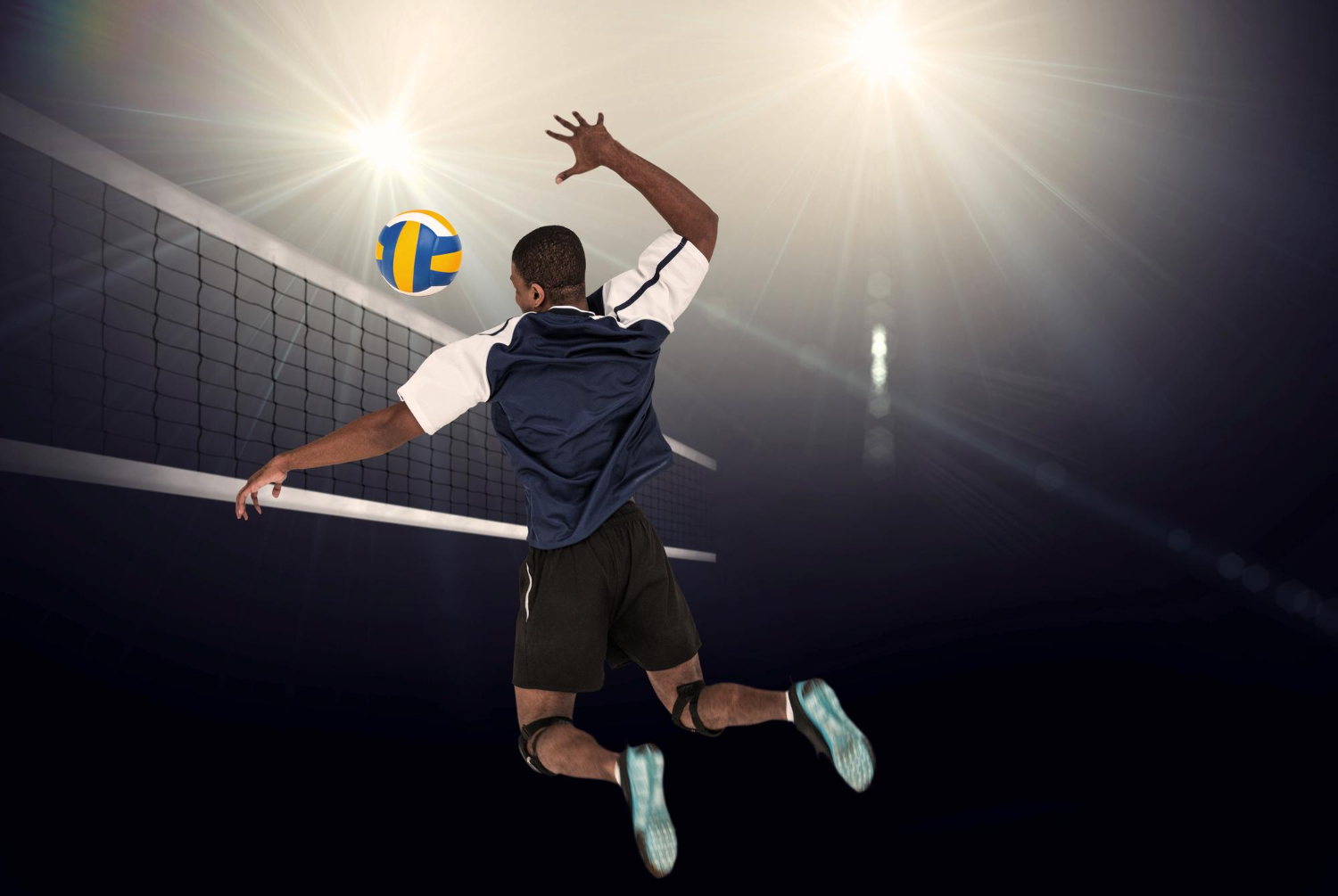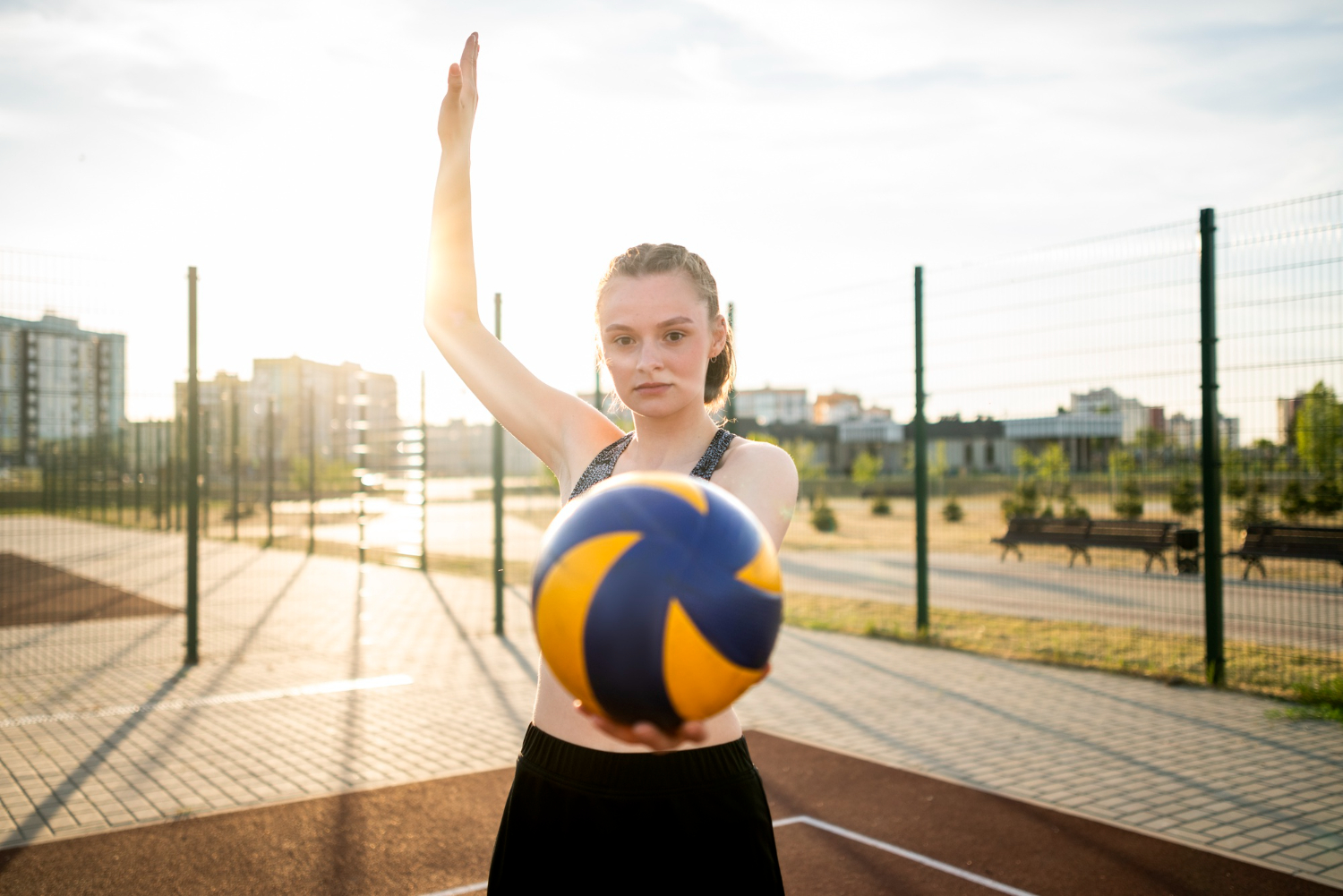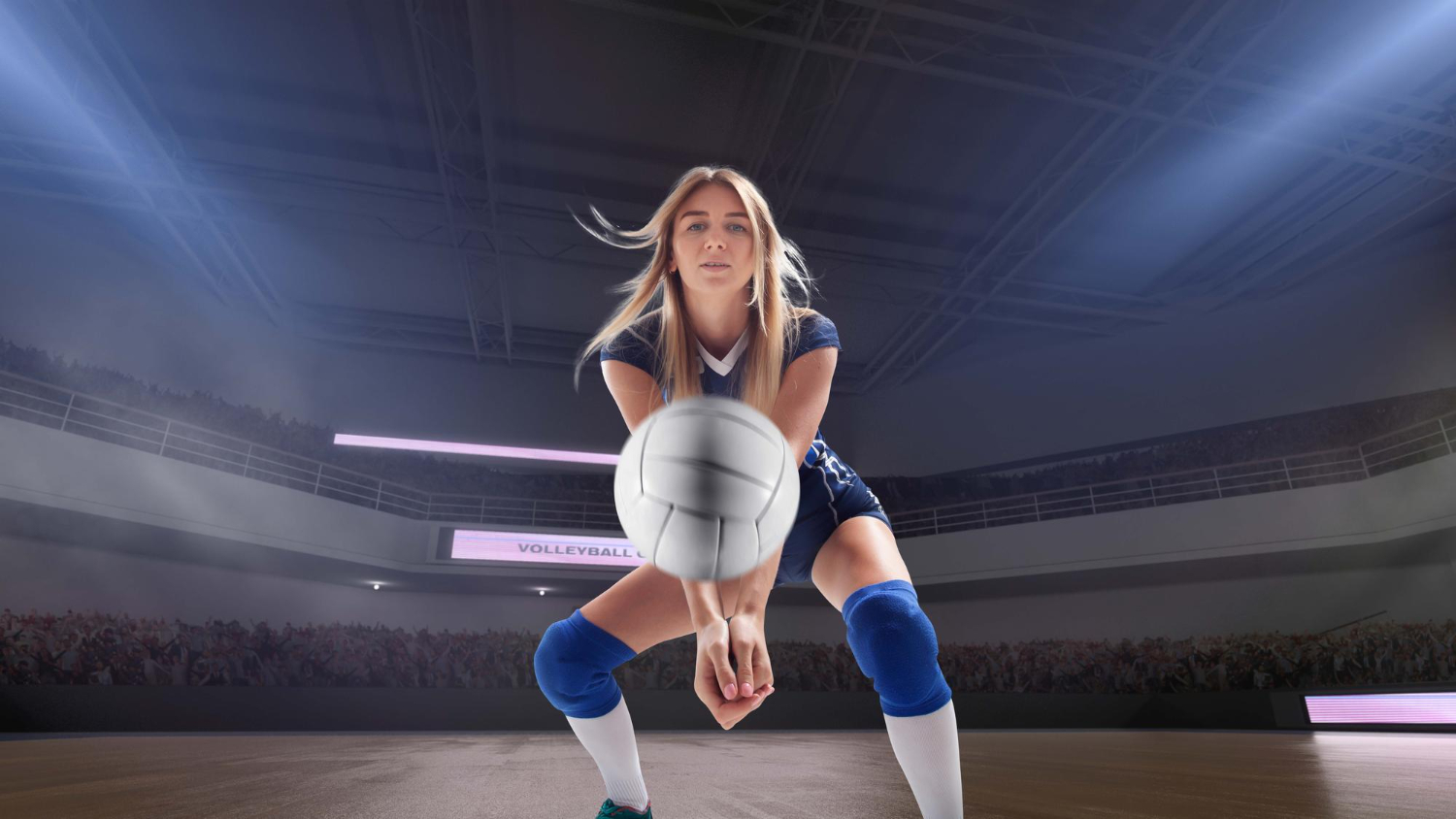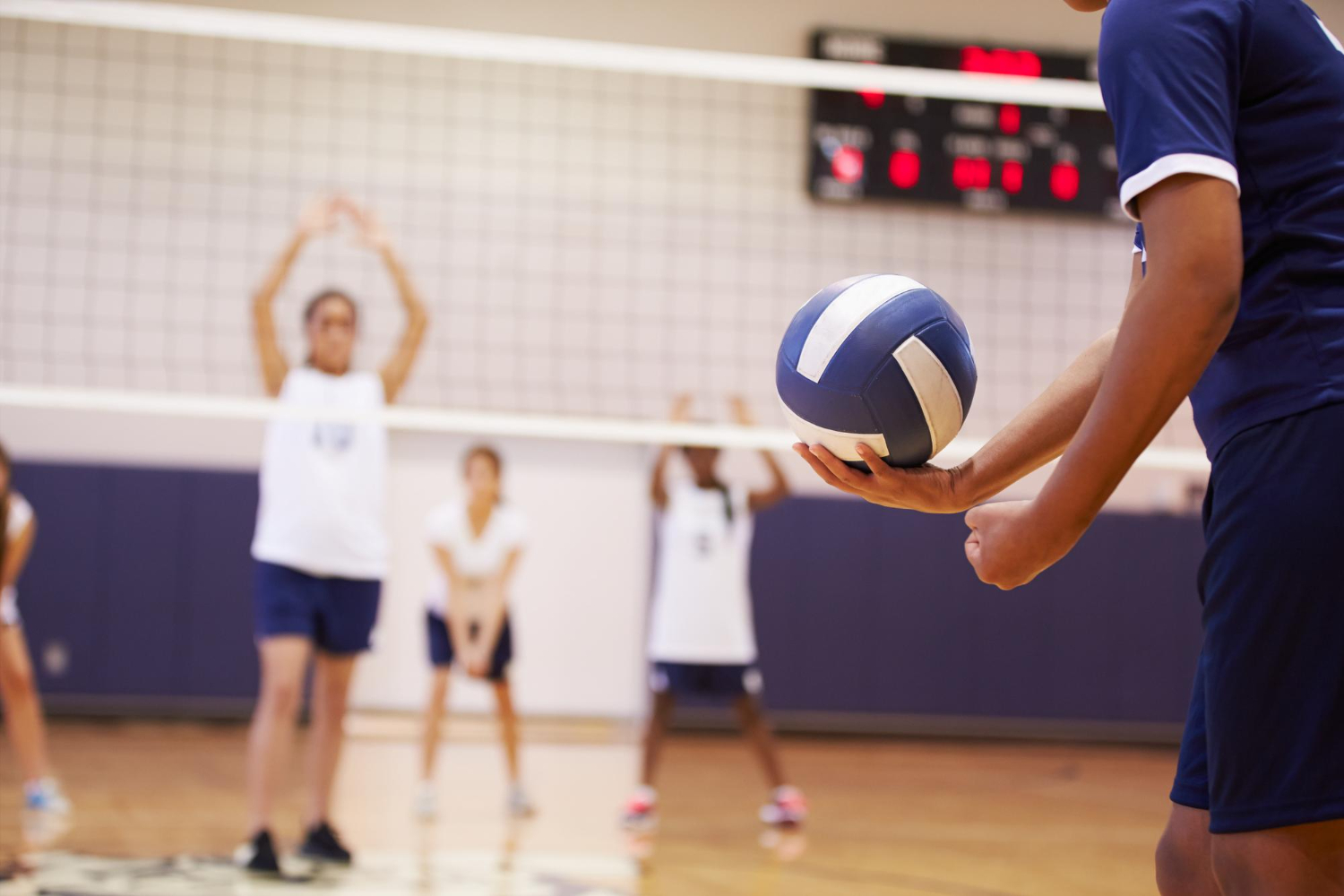Table of Contents
ToggleHitting is one of the most exciting and game-changing skills in volleyball, but it takes more than raw power to execute effectively. A strong hitter needs the right mix of timing, footwork, body control, and precision to turn a set into a successful attack. For beginners, practising structured hitting drills in volleyball builds the foundation for proper technique, while for developing players, it sharpens consistency and adds variety to their offensive game. Whether you’re learning how to approach the ball, improve your swing, or develop smarter shot placement, hitting drills are essential to becoming a reliable scorer and a valuable asset to your team.
What is Hitting in Volleyball?
In volleyball, hitting is the offensive action where a player jumps and forcefully strikes the ball over the net into the opponent’s court. The goal is to score a point by making the ball land inside the boundaries or forcing the opposing team into a weak return.
A successful hit combines:
- Approach & Timing: using proper footwork to get into position at the right moment.
- Vertical Jump: generating height to reach above the net.
- Arm Swing & Contact: striking the ball with power and control, usually with an open hand.
- Placement & Strategy: directing the ball to a spot that challenges the defense.
Hitting is considered one of the most dynamic skills in volleyball because it requires athleticism, coordination, and quick decision-making.
Why is Hitting Important in Volleyball?
Hitting is more than just swinging hard at the ball; it’s a game-changing skill that influences both the scoreboard and team momentum. A good hitter brings energy, strategy, and pressure to every rally, making this skill vital for any competitive player.
-
Scoring
The most direct way to earn points is through hitting. A clean, well-executed spike can end a rally instantly, giving your team the edge.
-
Intimidation and Pressure
A powerful hitter forces the other team to stay on guard. Opponents often hesitate or make mistakes when they’re under constant pressure from aggressive attacks.
-
Strategic Importance
Hitting isn’t just about strength; it’s about placement. Directing the ball to weaker defenders or open zones keeps the opponent guessing and breaks their rhythm.
-
Team Dynamics
Hitting connects the setter’s precision with the team’s offensive execution. A reliable hitter boosts team confidence and encourages smoother coordination during rallies.
-
Physical Benefits
Hitting builds explosive power, improves vertical jump, and enhances overall agility. It’s one of the best ways to develop athleticism while sharpening competitive instincts.
Supercharge your training! Looking for more drills? Browse our full collection of Volleyball Drills for all skills, from passing to serving.
Core Principles of Effective Hitting in Volleyball
Great hitters don’t just rely on strength; they master a combination of technique, timing, and awareness. To become consistently effective, players must focus on the following core principles:
- Approach: A strong approach builds momentum for the jump and swing. The classic three- or four-step approach helps generate power and rhythm before contact.
- Arm Swing: A proper arm swing is crucial for speed and force. Bringing the hitting arm back in a bow-and-arrow motion and snapping it forward ensures maximum impact.
- Timing and Jump: Jumping too early or too late can ruin a hit. Good hitters sync their jump with the setter’s delivery to reach the ball at the highest point.
- Contact Point: The ideal contact point is slightly above and in front of the hitting shoulder. Striking at this position allows better control, angles, and power.
- Follow-Through: Finishing the swing with a smooth follow-through improves accuracy and reduces the chance of errors. It also protects the shoulder from strain.
- Court Vision: Great hitters don’t just hit hard, they hit smart. Scanning the opponent’s defense before the swing helps in choosing open spots to score.
- Attack Options: Mixing up spikes, tips, and roll shots keeps defenders guessing. A versatile hitter is far more dangerous than one who’s predictable.
- Mental Game: Confidence, focus, and adaptability under pressure make a big difference. Even the best mechanics won’t work without the right mindset.
Volleyball Hitting Drills
Mastering the art of hitting takes more than just knowing the technique; it requires consistent practice through targeted hitting drills for volleyball. These exercises help players improve power, timing, accuracy, and decision-making, turning raw skills into game-ready performance.
Volleyball Hitting Drills for Beginners
If you’re just starting to play volleyball, hitting can feel a little overwhelming. It’s not just about jumping high and swinging hard; you need the right timing, good footwork, and a smooth arm swing to make your hits powerful and consistent. The good news is that with a few simple drills, you can build these skills step by step. Here are some easy yet effective drills to help you get started:
-
Arm Throw
- Purpose: You’ll develop a more powerful arm swing and better coordination between upper and lower body. That gives your hitting more pop and consistency.
- How it works: To perform this exercise, begin by standing with your feet shoulder-width apart and squatting down slightly. From this position, powerfully swing both arms back. Allow the momentum from this action to pull your hips forward, and then repeat the entire movement 5 to 10 times.
-
Approach Step Drill
- Purpose: The approach builds momentum. If your footwork and steps are right, your hits will carry more power and better timing.
- How it works: To perform the action, you should start from the attack line. Practice your approach with three or four steps, and as you take the final step, jump and simultaneously swing your arm to sync the motion.
-
Wall Hitting
- Purpose: It is great when you can’t use a net or partner. It builds control, wrist action, and helps you feel the swing mechanics safely and repeatedly.
- How it works: To play, toss the ball into the air, and as it reaches its peak, hit it against a wall with an open hand. Snap your wrist as you make contact to add topspin. You can repeat this action continuously to practice, or you can challenge yourself by setting specific targets on the wall to hit.
-
Reach and Snap
- Purpose: Sharpens timing, builds confidence in contacting the ball at peak height, and improves topspin mechanics.
- How it works: To perform this drill, line up directly behind the net. Have a partner toss balls for you, and as each ball comes your way, jump up to reach it at its highest point. As you make contact, snap your wrist to send the ball over the net. Continue this for 5-7 minutes.
-
Box Squat Spike
- Purpose: Teaches explosive power in legs and good coordination between jump and swing, both crucial for delivering strong hits in a real game.
- How it works: When performing this exercise, you’ll start by sitting on a box or bench with your knees bent, mimicking a normal jumping position. From there, you’ll explode up by powerfully pushing your feet into the ground. As you jump, you’ll attack a tossed ball in the air.
-
Partner Arm Swing Ball Throw
- Purpose: You focus purely on arm swing, rotation, and body alignment without worrying about jump or timing, which makes your full hits smoother later.
- How it works: Standing across from your partner, you can begin throwing a ball back and forth using a spiking motion. When you throw, make sure your feet are square to your target, and use your hip-shoulder rotation to generate power for the throw.
Advanced Volleyball Hitting Drills
Once you’ve mastered the basics of hitting, it’s time to push your game further with advanced drills. These exercises add speed, pressure, and decision-making, helping you hit smartly and powerfully in real game situations.
-
Scenario-Based Play
- Purpose: This drill teaches you to make quick, smart choices during a real game instead of just swinging the same way every time.
- How it works: To play practice games, you’ll rotate positions and run different plays. This will help you adjust to different sets, blocks, and defenses. During these games, remember to mix up your shots by using spikes, roll shots, tips, or softer swings.
-
Back Row Attacking Drill
- Purpose: You’ll get comfortable hitting from tougher spots, adding another weapon to your offensive game.
- How it works: You start by positioning yourself behind the 10-foot, or 3-meter, line. Your goal is to work with your passers and setter to attack the ball from the back row. As you’re doing this, you’ll need to focus on staying behind the line and hitting the ball with control.
-
3-in-a-Row Hitting Drill
- Purpose: It builds focus, consistency, and teamwork, all while keeping the drill competitive and fun.
- How it works: In this drill, you’ll partner up with another hitter. The goal is to earn a point by each of you hitting three good balls in a row. If you miss a shot, you simply keep going until you both successfully hit three consecutive good balls.
-
Power Hitting with Precision Drill
- Purpose: You learn to be both powerful and precise, making your hits much harder to defend.
- How it works: Players must vary their attacks by hitting from different positions on the court, such as the outside, opposite, and middle. They should aim for specific targets on the other side of the net, including shots down the line, cross-court, and into the deep corners. To keep the defense guessing, players should mix in powerful spikes with softer shots, like tips.
-
Wall Balls (Advanced Variation)
- Purpose: This builds arm speed, strength, and a higher contact point, making your spikes faster and sharper.
- How it works: To spike or throw a ball effectively, start by standing facing a wall. Swing your arm as if you’re spiking and throw the ball against the wall. Alternatively, you can toss the ball high with one hand and then spike it down into the floor. For an extra challenge, try adding resistance bands or light weights to increase the difficulty of the exercise.
-
Quick Hitter Transition Drill
- Purpose: It trains you to go from defense to offense quickly, which is exactly what middle hitters do in real matches.
- How it works: In this drill, a middle blocker first practices blocking a ball. After successfully blocking, they land and immediately transition to hit a different ball. The coach tosses this second ball immediately after the blocker lands. For an added challenge, the coach can toss two quick balls for the blocker to hit after the initial block.
Common Hitting Mistakes to Avoid
When you’re learning to hit in volleyball, it’s easy to slip into habits that hold you back. Here are a few common mistakes to watch out for (and fix):
-
Forgetting Your Core
Your power doesn’t just come from your arms; it starts with your legs, hips, and core. If you’re only swinging with your shoulder and arm, you’ll lose out on a lot of strength. Engage your core and let your whole body work together.
-
Hitting the Ball Too Low
One of the biggest game-changers is making contact at the highest point of your jump. If you wait too long and hit it on the way down, you’ll lose both power and angle.
-
Skipping the Wrist Snap
That quick wrist snap is what makes the ball dip fast with topspin. Without it, your hits are easier for the other team to return. If it feels awkward, practice the motion separately until it feels natural.
-
Messing Up the Timing
Even with perfect form, mistiming your jump can ruin the hit. Jump too early or too late, and you’ll end up swinging awkwardly. The key is syncing your jump with the setter’s toss is to practice until the rhythm clicks.
-
Rushing the Approach
Your approach should be explosive but controlled. Sprinting wildly toward the net usually leads to sloppy footwork, bad balance, and weak hits. Think power + control, not speed alone.
Mastering your hitting technique isn’t just about doing the right things; it’s also about catching yourself when you slip into bad habits. By staying aware of these common mistakes, practicing basic volleyball hitting drills, and adjusting early, you’ll build consistency, add more power to your swings, and become a much more reliable hitter for your team.
Train with the best and become the best. Our programs are designed to help you achieve your volleyball goals.
FAQs
-
How often should I practice volleyball hitting drills?
For best results, practice 3–4 times per week, balancing hitting with other skills like serving, passing, and blocking.
-
What’s the difference between a spike and a hit in volleyball?
The term “hit” refers to any contact with the ball, while “spike” specifically means an aggressive, downward attack.
-
Can beginners do volleyball hitting drills?
Yes. Beginners can start with approach and swing mechanics before moving to live hitting with a setter.
-
How can I increase my hitting power?
Strength training, proper approach technique, and explosive jump training are key for adding more power.
-
Do I need special shoes for hitting drills?
Volleyball shoes with good traction and cushioning help improve jump performance and reduce injury risk.
-
How can I jump higher for hitting?
Plyometrics, squats, box jumps, and calf raises are all excellent exercises for increasing your vertical jump. Consistent practice with the proper approach technique will also help.
-
What is a “line” shot versus a “cross-court” shot?
A “line” shot is a hit that travels in a straight line, parallel to the sideline. A “cross-court” shot is an angled hit that travels across the court to the opposite corner.
-
What is “tooling” the block?
“Tooling” the block is a strategic hit where you intentionally hit the ball off the outside of the blocker’s hands, causing the ball to deflect out of bounds and earn your team a point.
Key Takeaways:
- Good hitting relies on proper fundamentals like approach, timing, arm swing, and follow-through.
- Hitting is vital for scoring, creating pressure, and strengthening team dynamics.
- Practicing structured drills improves power, accuracy, and decision-making on the court.
- Avoiding common mistakes, like poor timing, weak wrist action, or rushing the approach, can drastically improve consistency.
- Awareness and continuous correction help players evolve into more reliable and effective hitters.
Authors
-
Sarah Baker is a dedicated sports and fitness content specialist with a rich background in athletics. As a former high school volleyball player and track athlete, she understands the transformative power of sports in shaping character and fostering discipline. Sarah is passionate about inspiring youth worldwide to embrace sports, hone their skills, and achieve excellence both on and off the court. She continually expands her knowledge through ongoing education in sports performance and fitness, aiming to empower her audience with valuable insights. Currently, Sarah contributes her expertise to the content team at Valley Athletics, a premier sports facility in Fresno, California, dedicated to developing young athletes in volleyball, basketball, and pickleball.
View all posts -

Jonathan stands as a monumental figure in volleyball, boasting accolades such as National Champion, National Player of the Year, and being one of the select few, just thirteen, to achieve All-American status four times in NCAA volleyball history. His illustrious playing journey took flight at Pepperdine University, culminating in his 2005 NCAA Championship win, AVCA National Player of the Year and Newcomer of the Year titles.
View all posts



